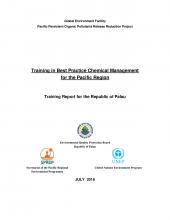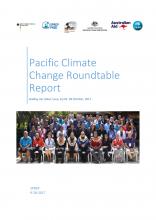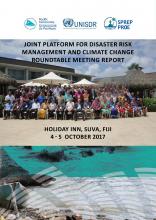Whales in a Changing Ocean Conference Report 4-6 April 2017

Island and Ocean Ecosystems
Available Online
To celebrate the Year of the Whale in the Pacific Islands, the Government of Tonga hosted a regional conference, Whales in a Changing Ocean, in Nukualofa, 4-6 April 2017. The conference was organised by SPREP, the Auckland Institute of Studies and the Tongan Government, and was supported by the Governments of Sweden, Australia, and New Zealand, the European Union, and a number of other generous donors. Sixteen governments were represented at the conference, three at Ministerial level and the others at the senior official level. Both regional and international NGOs participated in the conference, as well as experienced researchers and whalewatch operators. The conference was chaired by the Deputy Prime Minister of Tonga, Hon. Siaosi Sovaleni, and the Tongan Minister of Fisheries, the Hon. Semisi Fakahau.



